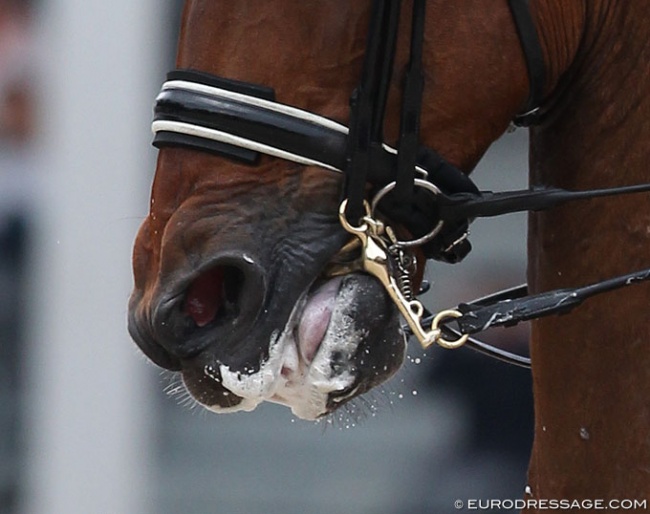
At the 2017 Annual ISES Conference researchers Lofgren, Allen and Brady of Perdue University presented their findings of a study carrried out on attitudes and perceptions on equine training techniques in an online discussion forum. The researchers particularly looked into how hyperflexion, spurs and nosebands are perceived in the disciplines of dressage, hunter/jumper and western riding.
Knowledge of equestrian communities’ opinions regarding horse training techniques and equipment is limited. Qualitative analysis of equestrian online discussion forums is a potentially untapped source of information on people’s thoughts about welfare issues.
The study analysed online discussion posts in Dressage, Hunter/Jumper and Western forum groups for their attitudes on hyperflexion, spurs and nosebands.
Analysis revealed similarities and differences in how these discipline groups perceived welfare issues related to these topics.
The Study - Opinion by Discipline: A Content Analysis of Attitudes and Perceptions on Equine Training Techniques in an Online Discussion Foru
There is an increasing amount of research regarding equine training techniques and equipment exploring their physical, psychological and behavioural impacts on the horse. The rise of technology provides endless accessible information about horse training and management to the equestrian public. Information about attitudes and perceptions of equestrian communities regarding training practices, especially between different equestrian disciplines, can be elusive.
This qualitative study focused on attitudes and perceptions of equestrians regarding specific training methods/equipment as reflected in an equestrian online discussion forum.
Forum posts were selected for analysis due to their unobtrusive nature, which allowed for anonymity and candor regarding participant attitudes. Three specific discipline groups were analysed: Dressage, Hunter/Jumper and Western. Forum threads were filtered by three topic areas identified in Equitation Science literature as potential sources of compromised welfare in ridden horses: hyperflexion, spurs and nosebands.
The Findings
From these filtered groups, random posts were selected for thematic analysis. Thematic analysis identifies and examines patterns in data and was used to analyse the selected posts for commonalities. Prevalent themes amongst all three disciplines were welfare concerns within their own discipline, negative feelings towards competition judges/governing bodies for ‘rewarding’ unethical practices and justification for utilising certain practices or equipment.
Specific to discipline, posts about hyperflexion in the Dressage group yielded themes of negativity towards judges, governing bodies and professional riders. The Hunter/Jumper and Western groups reflected themes of not identifying hyperflexion as a concern in their sport, negative feelings about dressage, while also justifying instances where they have utilised similar practices as necessary when a horse was misbehaving.
The topics of spurs and nosebands yielded themes of negativity towards different disciplines, knowledge-deficit concerns and justification for practices within all three discipline groups. The Hunter/Jumper group specifically reflected a theme of no welfare concern and justification for practices in the use of spurs for ‘lazy’ horses. The Western group most reflected the theme of negativity towards dressage and the use of tight nosebands.
Other topics also emerged thematically, including rapping, de-nerving, draw reins, martingales and tie-downs.
Conclusion
This content analysis provided further insight into discipline groups’ similarities and differences regarding opinions of training practices and equipment use as potential detriments to horse welfare. Further implications include continuing inquiry in this area and using these findings for intentional education and communication with equestrian audiences.
Source: ISES
Related Links
FEI to Review Dressage Training Methods Following Stakeholder Meeting at FEI HQ
Silke Rottermann: Switzerland Legally Bans Rollkur, Hip Hip Hooray?
ISES Suggest to Empower FEI Stewards to Control Tightness of Noseband
Noseband Special: Part IV: The Thicker, the Wider, the Better?
FEI Veterinary Committee Condems Hyperflexion
Training Methods Under FEI Observation